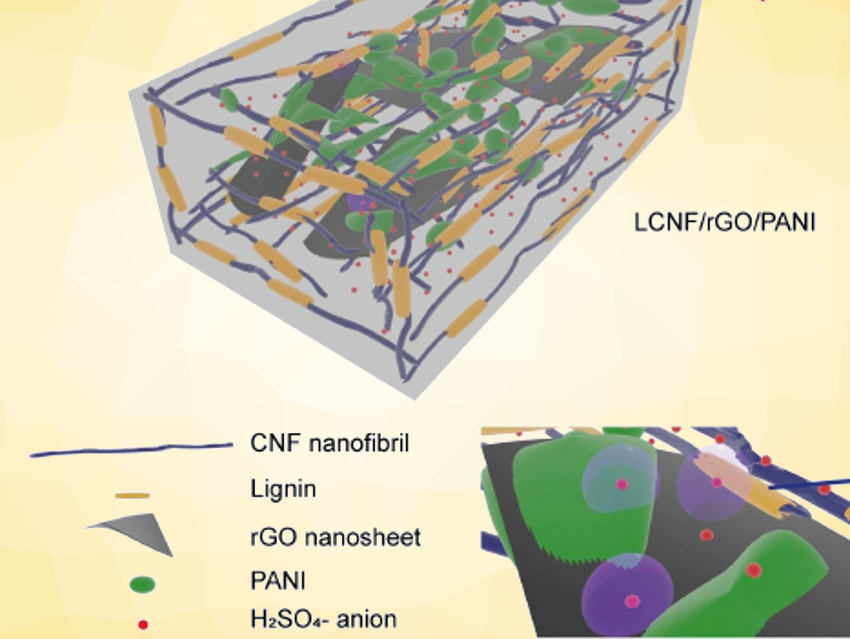Supercapacitors can be charged and discharged much faster than conventional batteries. Cellulose nanofibrils are promising as a renewable and low-cost mechanical support material for flexible supercapacitor electrodes. However, their electrochemical inactivity limits their usage in energy storage applications.
Ning Yan, University of Toronto, Canada, and colleagues have developed a flexible supercapacitor electrode based on lignin-containing cellulose nanofibrils (LCNF), reduced graphene oxide (rGO), and polyaniline (PANI). The team obtained water-dispersible rGO nanosheets by removing oxygen-containing groups from GO nanosheets under hydrothermal conditions. LCNF were prepared from red cedar bark. LCNF/rGO nanocomposite thin films were then created via the filtration of suspensions containing both precursors. PANI was grown on the composite films via in situ polymerization.
LCNF provides the resulting thin-film electrodes with improved mechanical and energy storage properties compared to cellulose nanofibrils without lignin. The optimized thin and flexible electrodes show a high specific capacitance of 733 F g–1 at 1 mV s–1 and long cycle life. The increase in specific capacitance is likely due to the electroactive quinone moieties in lignin, while the nanofibrils provide mechanical flexibility. Based on this work, LCNF could be a multifunctional component for high-performance energy storage applications.
- Lignin cellulose nanofibrils as an electrochemically functional component for high‐performance and flexible supercapacitor electrodes,
Nicolas Roland Tanguy, Haoran Wu, Sandeep S. Nair, Keryn Lian, Ning Yan,
ChemSusChem 2020.
https://doi.org/10.1002/cssc.202002558



